
Lect5-Optical_fibers_2
.pdf
Limiting bit rate near zero-dispersion wavelength
• Now it becomes clear that at λ = λZD, the dispersion slope So becomes the bit rate limiting factor. We can estimate the limiting bit rate by noting that for a source of spectral width Δλ, the effective value of dispersion parameter becomes
|
D = So Δλ |
|
=> |
The limiting bit rate-distance product can be given as |
|
|
BL |So| (Δλ)2 < 1 |
(B T < 1) |
*For a multimode semiconductor laser with Δλ = 2 nm and a dispersionshifted fiber with So = 0.05 ps/(km-nm2) at λ = 1.55 µm, the BL product approaches 5 (Tb/s)-km. Further improvement is possible by using
single-mode semiconductor lasers.
111

Dispersion tailored fibers
1. Since the waveguide contribution Dwg depends on the fiber parameters such as the core radius a and the index difference , it is possible to design the fiber such that λZD is shifted into the neighborhood of 1.55 µm. Such fibers are called dispersion-shifted fibers.
2. It is also possible to tailor the waveguide contribution such that the total dispersion D is relatively small over a wide wavelength range extending from 1.3 to 1.6 µm. Such fibers are called dispersionflattened fibers.
112
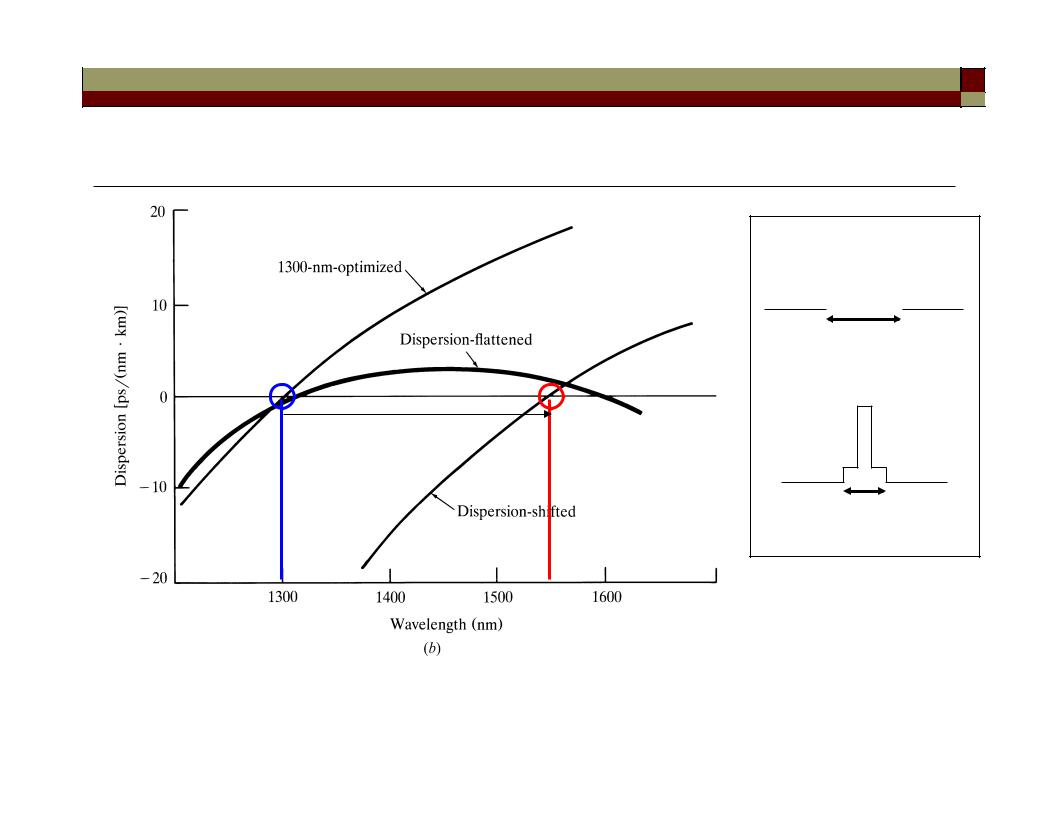
Dispersion-shifted and flattened fibers
(standard)  ncore(r)
ncore(r)
ncore(r)
• The design of dispersion-modified fibers often involves the use of multiple cladding layers and a tailoring of the refractive index profile.
113
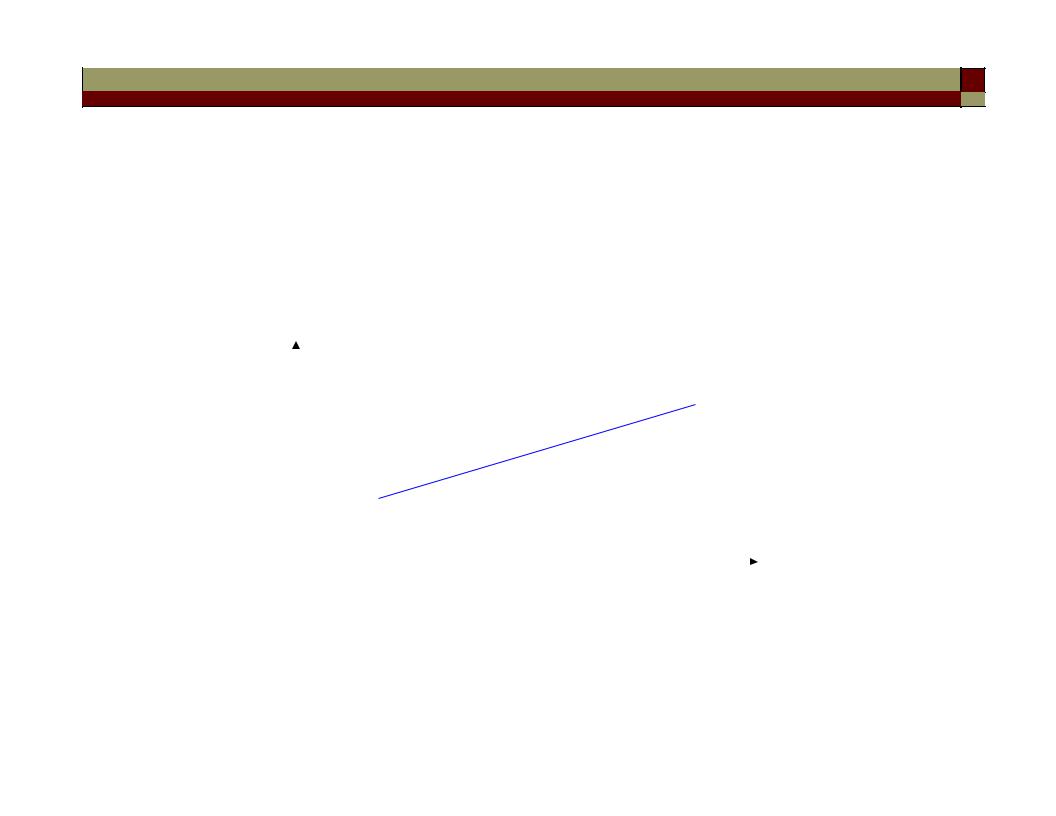
Non-zero dispersion shifted fibers
• Since dispersion slope S > 0 for singlemode fibers => different |
|
|||||||||||||||
wavelength-division multiplexed (WDM) channels have different |
||||||||||||||||
dispersion values. |
|
|
|
|
|
|
|
|
|
|
|
|
|
|
||
km] |
|
|
|
|
|
|
|
|
|
|
|
|
|
*SM fiber or non-zero |
||
|
|
|
|
|
|
|
|
|
|
|
|
|||||
[ps/nm- |
|
|
|
|
|
|
|
|
|
|
|
|
|
|||
|
|
|
|
|
|
|
|
|
|
|
|
|
dispersion-shifted |
|||
|
|
|
|
|
|
|
|
|
|
|
|
|
fiber (NZDSF) with |
|||
|
|
|
|
|
|
|
|
|
|
|
|
|
D ~ few ps/(km-nm) |
|||
Dispersion |
|
|
|
|
WDM |
|
||||||||||
|
|
|
|
|
|
|
|
|||||||||
|
|
|
|
|
|
|
|
|
|
|
|
|
|
λ |
||
|
|
|
|
|
|
|
|
|
|
|
|
|
|
|||
|
|
|
|
|
|
|
|
|
|
|
|
|
|
|||
|
|
1500 |
1550 |
1600 |
||||||||||||
|
|
|
|
|||||||||||||
|
|
|
|
|
||||||||||||
*In fact, for WDM systems, small amount of chromatic dispersion |
|
is desirable in order to prevent the impairment of fiber nonlinearity |
|
(i.e. power-dependent interaction between wavelength channels.) |
114 |
|

Chromatic Dispersion Compensation
• Chromatic dispersion is time independent in a passive optical linkallow compensation along the entire fiber span
(Note that recent developments focus on reconfigurable optical links, which makes chromatic dispersion time dependent!)
Two basic techniques: (1) dispersion-compensating fiber DCF
(2) dispersion-compensating fiber grating
• The basic idea for DCF: the positive dispersion in a conventional fiber (say ~ 17 ps/(km-nm) in the 1550 nm window) can be compensated for by inserting a fiber with negative dispersion (i.e. with large -ve Dwg).
115

Chromatic dispersion accumulates linearly over distance
(recall |
T |
= |
D L Δλ ) |
(ps/nm) |
|
|
|
dispersion |
|
|
time |
|
|
+D (red goes |
|
|
|
slower) |
|
|
|
|
|
Accumulated |
|
|
Positive dispersion |
|
|
transmission fiber |
|
|
|
time |
Distance (km) |
116 |
|

Chromatic Dispersion Compensation
Positive dispersion transmission |
Negative dispersion element |
fiber |
|
(ps/nm) |
|
-D’ |
|
-D’ |
|
-D’ |
|
|
|
|
|
|
|
Accumulated dispersion |
+D |
-D’ |
+D |
-D’ |
+D |
-D’ |
|
|
|
|
|
Distance (km) |
|
|
|
|
|
|
|
• In a dispersion-managed system, positive dispersion transmission |
|
fiber alternates with negative dispersion compensation elements, |
|
such that the total dispersion is zero end-to-end. |
117 |
|
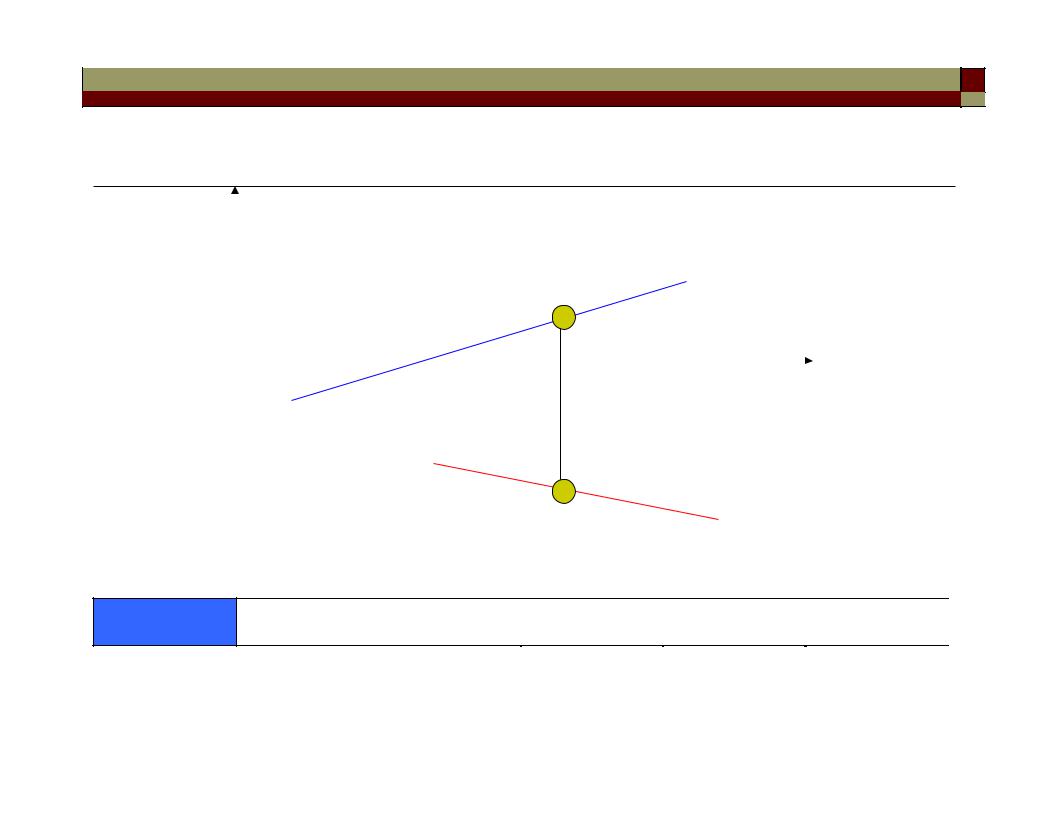
Fixed (passive) dispersion compensation
Dispersion [ps/nm-km]
SM
+ve
|
|
|
17 |
+ve |
|
|
|
SM fiber |
|
|
|
λ |
|||
|
|
|
λο |
|
|
||
|
|
|
|
|
|
|
|
|
DCF |
-80 |
-ve (due to large -ve Dwg) |
||||
|
|
||||||
DCF |
SM |
DCF |
SM |
DCF |
|||
-ve |
+ve |
|
-ve |
+ve |
|
-ve |
|
|
|
|
|
|
|
|
|
*DCF is a length of fiber producing -ve dispersion four to five times |
|
as large as that produced by conventional SMF. |
118 |
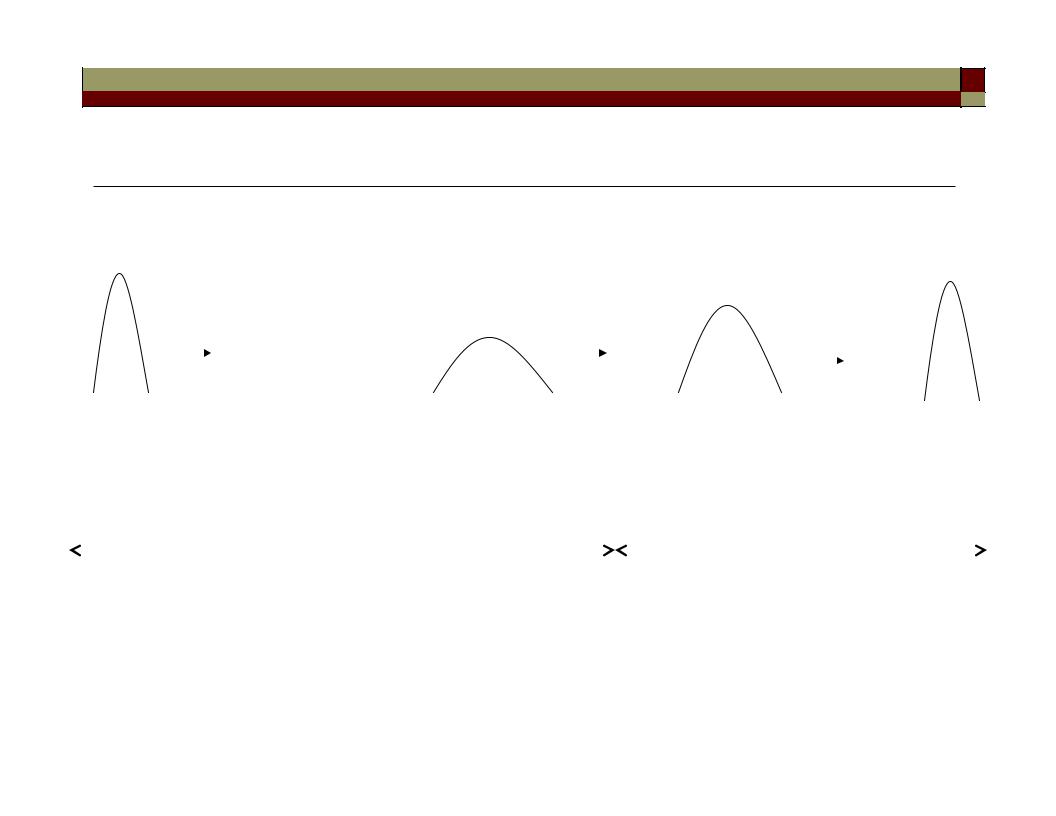
Dispersion-Compensating Fiber
The concept: using a span of fiber to compress an initially chirped pulse.
Pulse broadening with chirping |
Pulse compression with dechirping |
|
|
|
|
|
|
|
|
|
|
|
|
|
|
|
|
|
|
|
|
|
|
|
|
|
|
|
|
|
|
|
|
|
|
|
|
|
|
|
|
|
|
|
|
|
|
|
|
|
|
|
|
|
|
|
|
|
|
|
|
|
|
|
|
|
|
|
|
|
|
|
|
|
|
|
|
|
|
|
|
|
|
|
|
|
|
|
|
|
λl |
λs |
λl |
λs |
|
|
|
||||||
|
λs |
|
λs |
|||||||||||||
|
λl |
|
|
|
|
|
|
|
|
|
|
|
|
λl |
||
|
Initial chirp and broadening by a transmission link |
Compress the pulse to initial width |
||||||||||||||
|
|
|
|
|
|
|
|
|
|
|
|
|
|
|
|
|
|
|
|
|
|
|
|
|
|
|
|
|
|
|
|
||
|
|
|
|
L1 |
|
|
|
|
|
|
|
|
L2 |
|||
Dispersion compensated channel: D2 L2 = - D1 L1
119
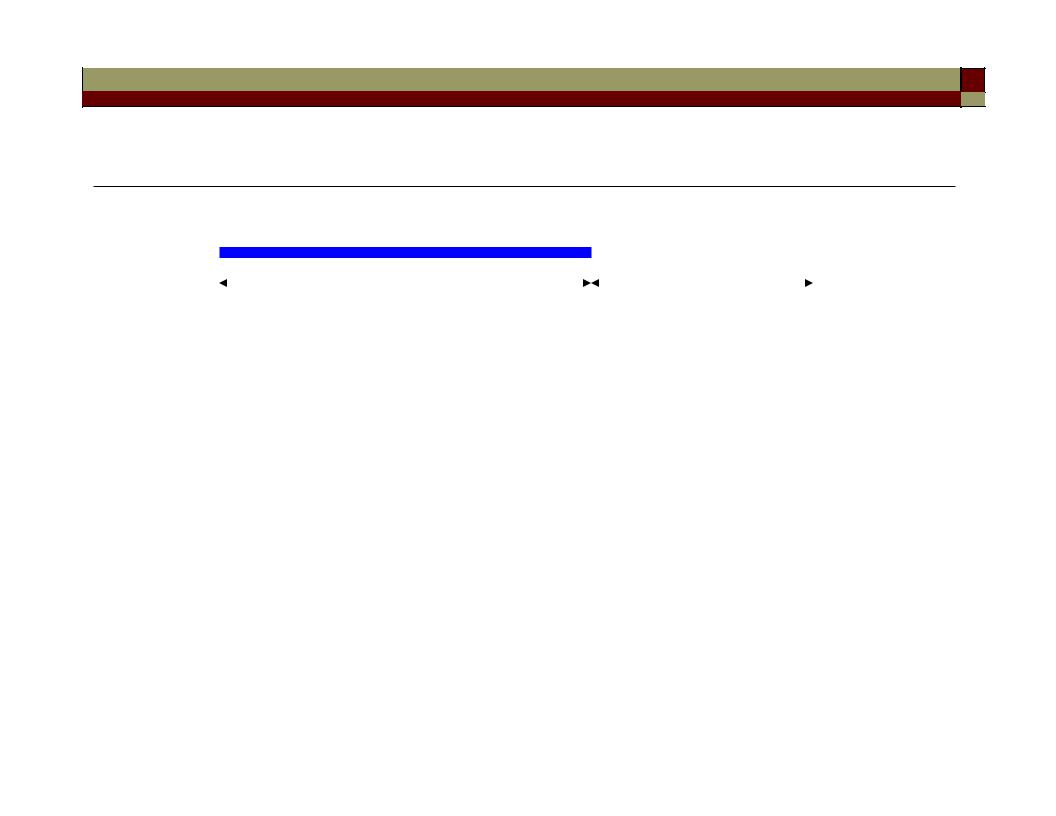
Dispersion-Compensating Fiber
|
|
Conventional fiber (D > 0) |
DCF (D < 0) |
|
||
Laser |
Detector |
|||||
|
|
|
|
|||
|
|
|
|
|||
|
|
|
|
|
|
|
|
|
L |
LDCF |
|||
e.g. What DCF is needed in order to compensate for dispersion in a conventional single-mode fiber link of 100 km?
Suppose we are using Corning SMF-28 fiber,
=> |
the dispersion parameter D(1550 nm) ~ 17 ps/(km-nm) |
|
Pulse broadening Tchrom = D(λ) Δλ L ~ 17 x 1 x 100 = 1700 ps. |
assume the semiconductor (diode) laser linewidth Δλ ~ 1 nm.
120
